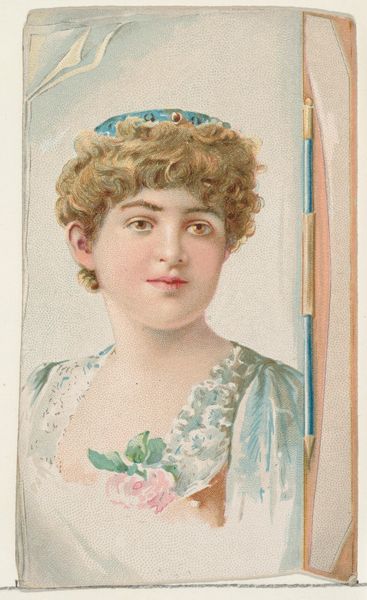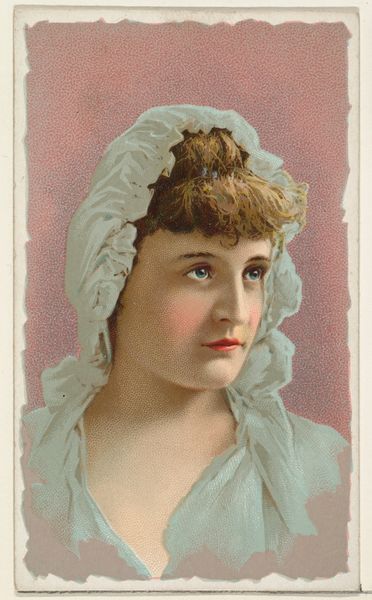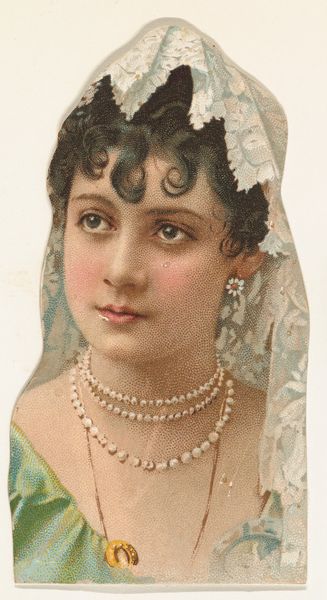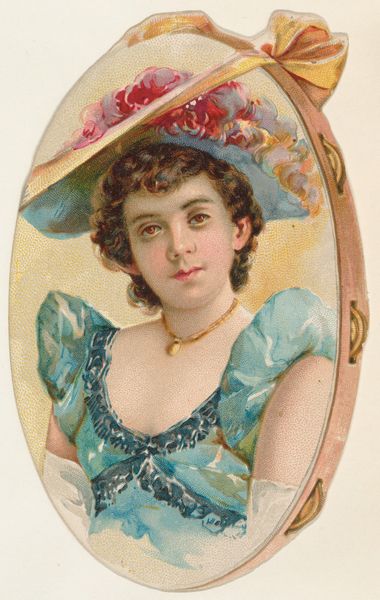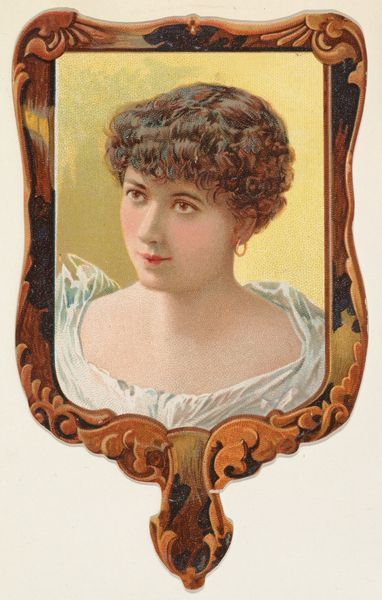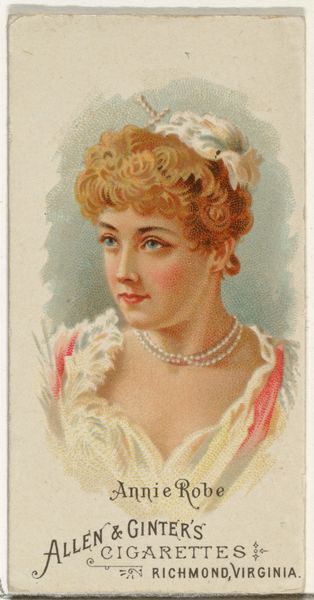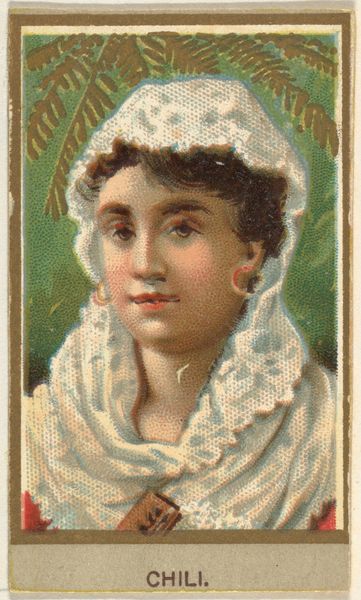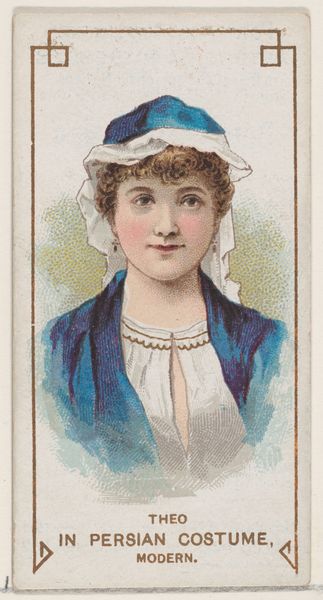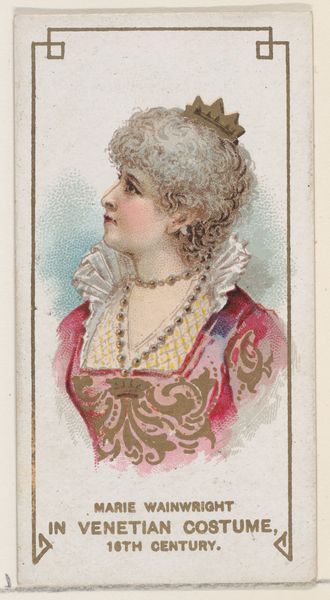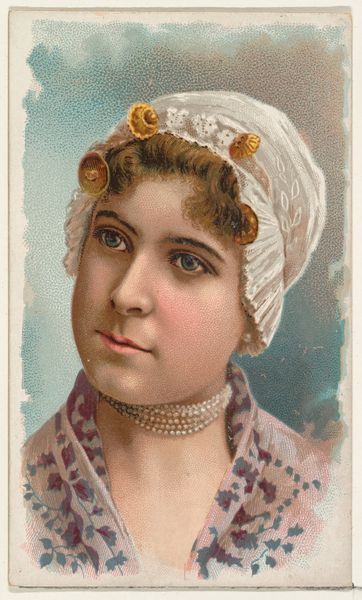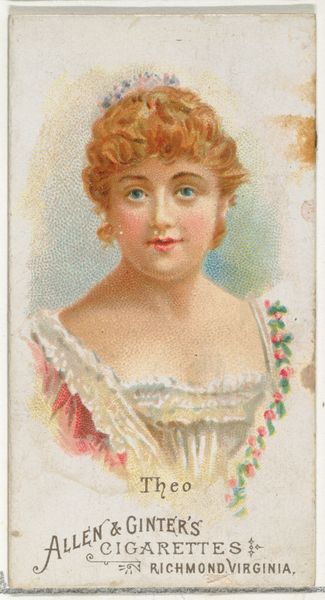
Picture Frame, from the Novelties series (N122) issued by Gail & Ax Tobacco to promote Navy Long Cut 1889
0:00
0:00
drawing, print, gouache
#
portrait
#
gouache
#
drawing
# print
#
gouache
#
figuration
#
decorative-art
#
miniature
#
watercolor
Dimensions: Sheet: 4 1/8 × 2 7/16 in. (10.5 × 6.2 cm)
Copyright: Public Domain
Editor: So this is “Picture Frame” from the Novelties series by Gail & Ax Tobacco, dating back to 1889. It looks like a watercolor print, and the subject is a woman in profile. What immediately strikes me is how idealized she is; it’s a very romanticized portrayal. What do you see in this piece? Curator: What I see is an intriguing convergence of advertising, art, and the construction of femininity in the late 19th century. These were trading cards, essentially advertisements for tobacco. But, the image presents a particular vision of womanhood—demure, ornamental, framed. How does the act of 'framing' impact your perception? Editor: That’s interesting. I hadn’t really thought about the framing as a cultural metaphor. I guess it puts her on display, makes her an object to be consumed, like the tobacco. Is the style also playing a role here? It looks decorative, even superficial. Curator: Exactly. The decorative art style reinforces this objectification. This 'novelty' is meant to be collected and admired, drawing a parallel between the desirability of the product, tobacco, and the idealized image of the woman. How might this connect to broader societal expectations of women during this era? Editor: Well, women were often expected to be decorative and to embody purity and beauty. This image seems to feed directly into that. I’m starting to see how something as simple as a tobacco card can reflect really complex social and political dynamics. Curator: Precisely. And understanding these images within their historical and social context helps us unravel the ideologies that shaped them and, to a degree, continue to influence us today. The seemingly innocuous becomes a powerful tool for understanding our past and present. Editor: I see that now. Thinking about it as a cultural object instead of just a pretty picture makes a huge difference. Thanks for pointing that out! Curator: Absolutely. It's about questioning, and constantly re-evaluating the narratives embedded in even the most seemingly benign imagery.
Comments
No comments
Be the first to comment and join the conversation on the ultimate creative platform.
